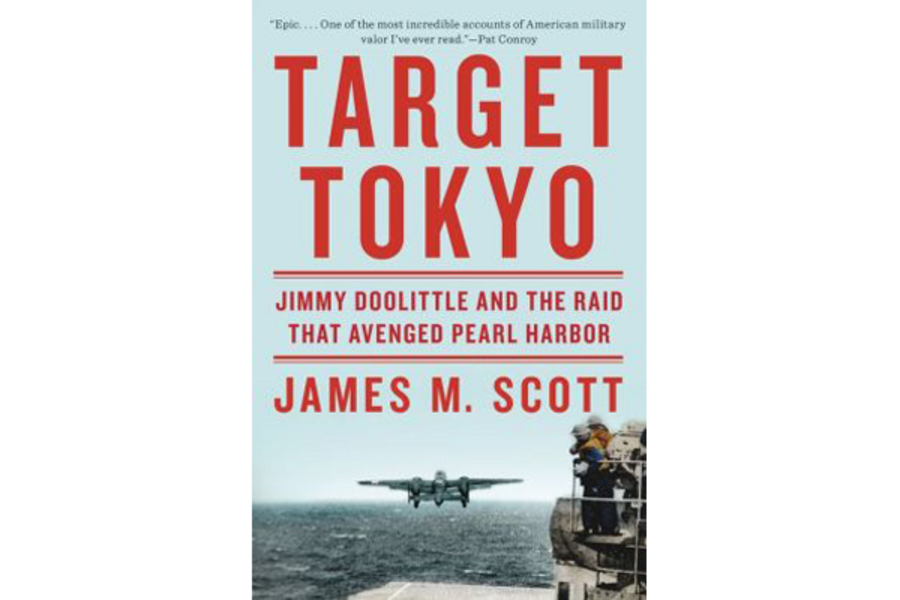'Target Tokyo' offers a gripping retelling of the Doolittle raid, complete with new detail
Loading...
Shortly after the December 1941 attack on Pearl Harbor forced America into World War II, President Franklin Roosevelt ordered his military leaders to find a way to bring the war directly to the Japanese homeland. The plan was, ultimately, straightforward: a small naval task force would launch a handful of bombers to attack military and industrial targets in and near Tokyo and land in airbases in China that had not yet fallen into Japanese hands.
But it was an audacious undertaking. The navy would have to get close to Japan while avoiding the far more powerful Japanese fleet and air force. The large land-based bombers would have to take off from the deck of an aircraft carrier (something never before attempted) with an absurdly short runway, avoid enemy fighters and anti-aircraft fire, bomb the targets, and locate small, poorly marked airfields in China. In short, it had all the makings of a suicide mission.
And things got off to a bad start. The Japanese navy discovered the American task force and the planes were launched far earlier than intended, guaranteeing that the pilots would not have enough fuel to reach China. While the bombers successfully executed their attacks and suffered almost no damage in doing so, all but one of the planes crash landed. Amazingly almost all of the airmen survived, and with the help of Chinese farmers and villagers, the vast majority soon escaped to safety.
The mission was led by Lt. Colonel James (“Jimmy”) Doolittle.” A successful and well known racing and test pilot (he was the first person to fly a plane using instruments alone) and an aeronautical engineer with graduate degrees from MIT, he was also a natural and inspirational leader. Surprisingly, Doolittle himself thought that the raid had been a failure because all the planes were destroyed and he told a crew member that he expected to be court marshaled. The crewman disagreed and told Doolittle that he would be promoted to general and awarded the Congressional Medal of Honor. The subordinate proved the better prognosticator.
Given all the attention that the Doolittle raid has received in the last 73 years (it was memorialized even before the war ended in “Thirty Seconds over Tokyo,” a film starring Spencer Tracey and Van Johnson), it’s hard to imagine that there is much we don’t know about this story. But in Target Tokyo: Jimmy Doolittle and the Raid that Avenged Pearl Harbor, James Scott provides an extraordinarily complete account of the mission and its aftermath. The story is still familiar, of course, but he tells it in a gripping, compulsively readable way that will have great appeal to anyone with even a passing interest in the Second World War.
Scott appears to have read everything ever written about the attack and uncovered materials that had not previously been examined. In particular, his analysis of what happened after the bombing that adds a great deal to our knowledge. For Americans, it was simple: The raid provided a great psychological boost to a public that had been fed a steady diet of bad news since the war began. President Roosevelt, writing to Winston Churchill shortly after the raid, told him “I am frank to say that I feel better about the war than at any time in the past two years.” There were plenty of dark days ahead, of course, but it felt as if a corner had been turned.
But it was a different for the Japanese. As Scott notes, it had been more than 2,500 years since an invader had touched Japan and they were totally unprepared. They were interested in retaliation. In particular, Japanese troops viciously attacked areas of China that they did not control to prevent future attacks, an offensive characterized by exceptional brutality toward the civilian population. Scott’s summary of the murder, arson, torture, and gratuitous savagery makes for difficult reading, even for those accustomed to the horrors of World War II. He estimates that 250,000 Chinese died during this campaign.
The bombing also affected the Japanese war strategy. After the raid the Japanese quickly finalized their plans to attack Midway Island to expand their control of the Pacific and give more cushion against future American raids. But this proved a unmitigated disaster when they lost four aircraft carriers to American dive bombers. The Japanese navy never recovered.
The retaliation also extended to the eight American flyers who were captured after the raid. Three were soon executed by the Japanese for “war crimes” while the others were brutalized until the war ended. One of the captives died, presumably of starvation. In this sense, the story echoes Laura Hillenbrand’s bestseller “Unbroken” in its detailed and compelling description of the horrific treatment American prisoners of war endured at the hands of the Japanese.
But even in these awful conditions, Scott finds evidence of humanity and grace. Jacob DeShazer, one of the four surviving airmen turned to Christianity and promised he would return to Japan as a missionary after to war. He did and eventually spent more than 30 years and started more than 20 churches. Among those he converted and baptized was Mitsuo Fuchida, the famed Japanese fighter pilot who led the attack on Pearl Harbor.
In the history of warfare, few engagements that produced this little military damage have had as much impact and generated as lasting interest as the Doolittle Raid. Thanks to James Scott, we now have the definitive account of this undertaking.








